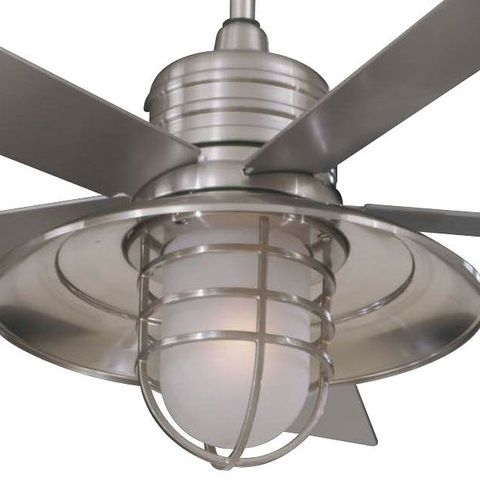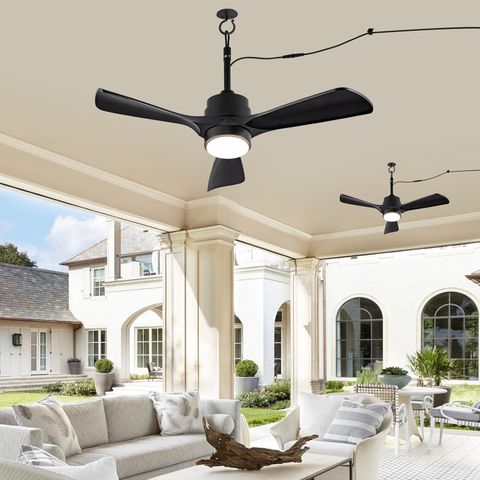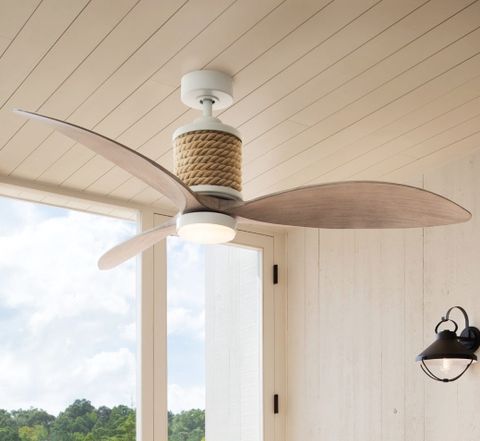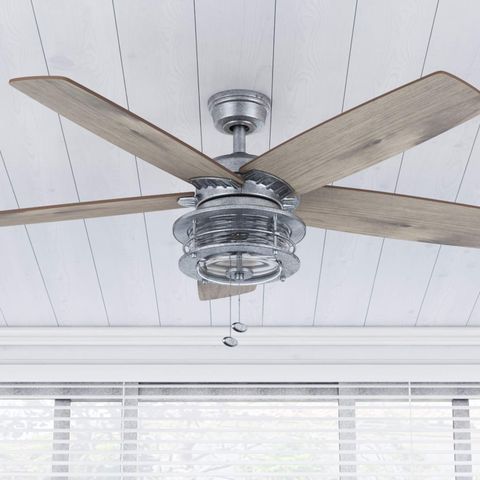Picture this: You’re relaxing on your patio, enjoying the ocean breeze, when suddenly you notice your ceiling fan is making strange noises. Or worse, it’s stopped spinning altogether. This isn’t just a frustrating moment – it’s a warning sign that your outdoor fan might not be built for the harsh realities of seaside living. The combination of salt spray, intense UV rays, and unpredictable weather creates a unique challenge for outdoor fans. But here’s the good news: with the right approach, your ceiling fan can become a reliable companion through decades of coastal living.
Outdoor ceiling fans in seaside areas face a daily battle that most indoor fans never encounter. Salt air isn’t just a minor inconvenience – it’s a corrosive force that eats away at metal components over time. Think about how quickly a car rusts in a coastal environment, and imagine that happening to your fan. The salt particles in the air settle on surfaces, creating microscopic pathways for corrosion. It’s like having a slow-motion demolition happening every single day. What makes this even more complex is that these fans must withstand not just salt, but also intense sunlight, high humidity, and periodic storms. The right fan selection and maintenance routine can mean the difference between a fan that lasts 10 years or one that needs replacement after just two.
Choosing the Right Materials
When shopping for an outdoor ceiling fan in a seaside area, material choices are everything. Aluminum and stainless steel are your best friends here. These metals don’t just resist corrosion better than regular steel – they actually embrace it in a way that protects rather than destroys. Consider a fan with marine-grade aluminum blades and a stainless steel motor housing. These materials work together to create a barrier against salt infiltration. Avoid fans made entirely of regular steel or painted metal – they may look nice initially, but they’ll disappoint you in the long run. Some manufacturers offer fans with special coatings designed specifically for coastal environments. These aren’t just fancy paint jobs; they’re protective layers that can extend your fan’s life significantly. Look for fans with powder-coated finishes that are rated for salt exposure. The quality of these coatings matters – thin layers won’t last, while thick, professional-grade applications can provide decades of protection.
Weatherproof Rating Matters
Don’t overlook the IP rating or weatherproof certification on any fan you consider. These numbers tell you exactly how well a fan will handle the elements. An IP65 rating means the fan is protected against dust and water jets, which is essential for seaside locations. Higher ratings like IP67 or IP68 offer even better protection against moisture intrusion. These aren’t just marketing buzzwords – they represent actual engineering solutions to environmental challenges. When you see a fan labeled as "marine rated," take that seriously. This doesn’t just mean it can handle rain – it means it’s been tested under conditions that simulate real coastal environments. The difference between a fan that meets basic requirements versus one that exceeds them can be measured in years of additional service life. Many manufacturers test their products using salt spray chambers that replicate coastal conditions. If a fan passes these tests, it’s likely to perform well in your backyard.
Proper Installation Is Critical
Even the best fan will fail if it’s not installed correctly. This is especially true in coastal areas where wind loads and salt exposure create additional stress. Mounting hardware becomes crucial – use stainless steel bolts and washers instead of galvanized or regular steel. The mounting bracket itself should be rated for coastal conditions. A poorly secured fan can become a dangerous projectile during a storm. It’s worth investing in professional installation, particularly for higher ceilings or challenging mounting situations. The mounting hardware often gets overlooked, but it’s the foundation of everything else. Make sure the mounting surface can handle the weight and movement forces. In some cases, you might need to reinforce the ceiling structure. Don’t compromise on the mounting – a fan that wobbles or shakes is not just annoying, it’s potentially dangerous and puts extra strain on already stressed components.
Regular Cleaning Routine
Salt accumulation happens constantly, even if you don’t see it. Every week or two, give your fan a quick cleaning with a soft cloth and mild soap solution. Salt residue builds up quickly on blades and housing, and it’s easier to remove fresh buildup than old, hardened deposits. Use distilled water when possible – it’s less likely to leave mineral deposits. Pay special attention to the motor housing and electrical connections. These areas are particularly vulnerable because they’re often harder to reach. A simple brush can help remove salt from hard-to-reach spots. Don’t forget to clean the light fixtures if your fan includes them. These can become coated with salt and lose their effectiveness. Some people find it helpful to use a garden hose with low pressure to rinse off salt, but avoid getting water into electrical components. A gentle wipe-down with a damp cloth is usually sufficient.
Lubrication and Maintenance
Moving parts in outdoor fans require special attention. The bearings and motor components need regular lubrication to function smoothly. Use marine-grade lubricants specifically designed for outdoor use – they resist salt and temperature changes better than regular oils. Most manufacturers recommend lubricating every six months to a year, depending on usage. Check the manufacturer’s manual for specific recommendations. Sometimes, you might need to disassemble parts to get proper lubrication, which is why understanding your fan’s design is important. Professional maintenance visits are worth considering for expensive or critical fans. These technicians know exactly how to handle coastal environments and can spot potential problems before they become major issues. A well-lubricated fan runs quieter and uses less energy, which is always a bonus. Some fans have sealed bearings that don’t require regular lubrication, but check the specifications carefully.
Seasonal Adjustments and Protection
Coastal environments change with seasons, and your fan should adapt accordingly. During winter months, when storms are more frequent, consider using a fan cover or protective shield. These aren’t decorative – they’re functional barriers against salt-laden winds. Some homeowners install removable covers that can be easily applied and removed. During hurricane season, you might want to consider temporary shutdowns of high-speed operation. The stress on the system during extreme weather can be significant. Even with the best materials, extreme weather events can cause damage. Having a plan for seasonal adjustments shows respect for both your investment and your safety. Some fans come with removable blades, which can be taken off during severe weather periods. This is a common practice among serious coastal homeowners who want maximum protection.
Your outdoor ceiling fan isn’t just a piece of furniture – it’s a long-term investment in comfort and enjoyment. By choosing quality materials, understanding proper installation, and committing to regular maintenance, you’re essentially building a partnership with your fan. This relationship pays dividends in countless summer evenings, reduced energy bills, and peace of mind. Remember, the cost of prevention is always much lower than the cost of replacement. Don’t let salt air and coastal conditions ruin your plans for comfortable outdoor living. With the right approach, your fan can be part of your seaside story for decades to come. It’s not about perfection – it’s about making smart choices and staying consistent with care. The little effort you put into maintenance today will save you from major headaches tomorrow. After all, there’s nothing quite like the sound of a properly maintained fan cutting through a hot summer evening.














